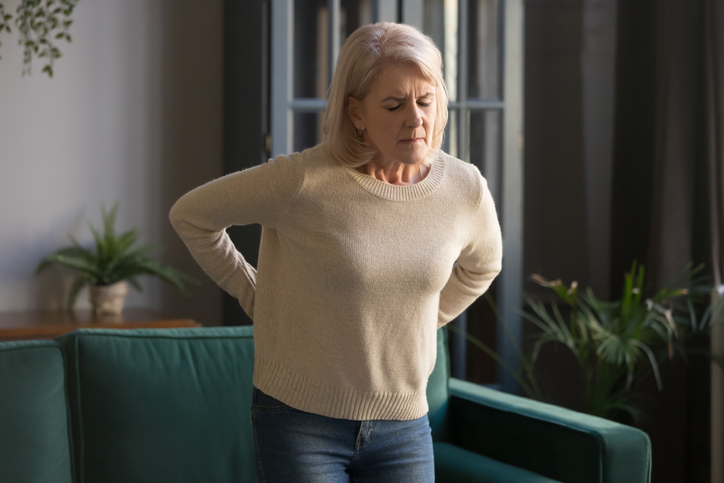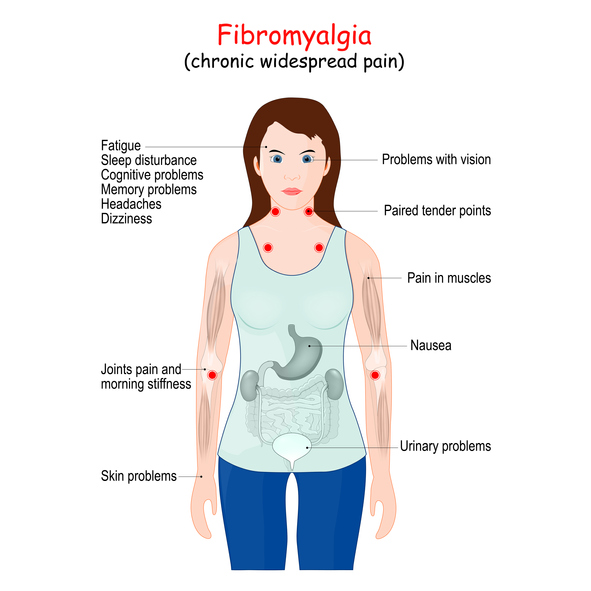Do you suffer from fibromyalgia?
05 June 2023

At Brixworth Osteopathic Clinic we often see patients who have either just been diagnosed with Fibromyalgia or, having previously come to us with widespread and chronic pain, have led to a referral for further investigations and a diagnosis. Either way this condition is very common, and from our experience, is often helped by Osteopathy.
What is Fibromyalgia?
Fibromyalgia is a chronic condition characterised by widespread pain and tenderness and a host of other symptoms including fatigue and sleep problems. Its cause is not fully understood but people who have fibromyalgia have a heightened sensitivity to pain and have also been found to be more sensitive to temperatures, noise, and bright lights. (NIAMS, 2022).
Researchers think that fibromyalgia may be caused by an issue with how the brain and spinal cord interact with the body's central nervous system, causing painful and non-painful signals to be misinterpreted.
Much like other persistent pain conditions, people with fibromyalgia usually experience periods of flare-up, where symptoms become heightened. On "good days" (without flare-ups), people living with fibromyalgia are often able to go about their daily routine as usual.
The fact that the symptoms come and go can be one of the harshest factors impacting a person with fibromyalgia's mental health. It can be exhausting having to navigate through periods of intense chronic pain and periods of feeling good.
Is Fibromyalgia Common?
Research suggests that fibromyalgia may be a common condition, with many people suffering from it undetected and undiagnosed. In the UK, it is estimated to affect between 1.5million and 2.9 million people.
It's a challenging condition to diagnose and can often be misdiagnosed by doctors. There is no specific test to diagnose it, and the symptoms are similar to various other conditions. As the syndrome becomes more widely understood, diagnoses are becoming more common.
People of all ages can be diagnosed with fibromyalgia, but it more commonly begins developing between the ages of 25 and 55, with women at a higher risk than men.
How do people get Fibromyalgia?
The cause of fibromyalgia is not known, but studies show that people with the disorder have a heightened sensitivity to pain, so they feel pain when others do not. Brain imaging studies and other research have uncovered evidence of altered signalling in neural pathways that transmit and receive pain in people with fibromyalgia. These changes may also contribute to the fatigue, sleep disturbances, and cognitive problems that many people with the disorder experience.
People with certain health conditions (Rheumatoid arthritis, Osteoarthritis, Ankylosing Spondylitis, Lupus, irritable bowel syndrome and anxiety/depression) are more likely to have fibromyalgia, and there is an increased risk of developing fibromyalgia after physical trauma as it can often change how the brain processes pain and stress.
Studies have also linked long-term psychological issues with fibromyalgia. PTSD, mood disorders, anxiety and childhood abuse or neglect have all been linked with fibromyalgia. However, there's no concrete evidence that these specifically cause the condition.
The condition is also more prevalent in people that are suffering from obesity and who live sedentary lifestyles.
Fibromyalgia tends to run in families, so genetic factors are likely to contribute to the disorder, but little is known for sure about the specific genes involved. Researchers believe that environmental (nongenetic) factors also play a role in a person’s risk of developing the disorder. There is an increased risk of developing fibromyalgia after physical trauma as it can often change how the brain processes pain and stress.
What are the main symptoms of Fibromyalgia?
- Chronic, widespread pain throughout the body or at multiple sites. Pain is often felt in the arms, legs, head, chest, abdomen, back, and buttocks. People often describe it as aching, burning, or throbbing.
- Fatigue or an overwhelming feeling of being tired.
- Trouble sleeping.
Other symptoms may include:
- Muscle and joint stiffness.
- Tenderness to touch.
- Numbness or tingling in the arms and legs.
- Problems with concentrating, thinking clearly, and memory (sometimes called “fibro fog”).
- Heightened sensitivity to light, noise, odours, and temperature.
- Digestive issues, such as bloating or constipation.

What is Osteopathy and Can It Help?
Osteopathy is a therapy that uses hands-on treatment techniques, including specific massage, to move and stretch a person's muscles and joints. It's an alternative pain treatment based on the principle that the structure and function of the body are interrelated - all the body's bones, tendons, muscles, ligaments, blood supply and other fluids in the body (Lymph and cerebrospinal fluid) need to work together for the body to function smoothly.
Osteopaths are highly trained allied health professionals having studied for four years at university to be able to diagnose health conditions and apply a variety of techniques to alleviate them or where appropriate refer you for further medical tests if needed.
Osteopathy works to improve symptoms of bone, muscle and joint conditions through physical therapy and focuses on treating the underlying physical and mental problems rather than just the pain.
An osteopath can help to ease many of fibromyalgia symptoms, particularly fatigue, muscle pain, and chronic headaches.
Depending on the patient and the symptoms they're experiencing, the osteopath may deploy a variety of different techniques:
- Soft tissue techniques - massage or stretching technique utilising direct pressure to relax muscles that are hypertonic (too tight)
- Articulations - moving joints through their natural range of motion
- Cranial Osteopathy - a light and gentle technique that relaxes the head and neck and helps improve mobility.
- Manipulations - small quick movements of the joints
- Inhibitions - deep pressure technique used to release muscle tension
No two people are the same, so some osteopathic treatments may work for some but may not work for you. Our Osteopaths will take the time to discuss the options with you.
Benefits of Osteopathy for Fibromyalgia
People with fibromyalgia who seek help from an osteopath may experience the following benefits:
- Increased joint mobility
- Reduced joint pain
- Released muscle tension
- Reduced stiffness
- Reduced pain overall
- Help with any sleep disturbances
- Improved mental health
- Improved quality of life
If you feel you may have fibromyalgia or want to discuss how Osteopathy might help you condition contact Brixworth Osteopathic Clinic to book a consultation.
